
Before I tell you what a CCD is, let me tell you where it originates. It’s one of the many strategies used in Project GLAD (Guided Language Acquisition Design). I was lucky enough to be GLAD trained a few years ago. I quickly used these strategies with my 3rd and 4th graders in a unit called, Biomes of the World. The whole process and unit revolves around language acquisition with ELL students. However, as a bonus, it also works with your entire population of students. Project GLAD uses a ton of real photographs, books, vocabulary skills, total physical responses, interactive journals, and tons of input charts for students to gain a personal and deep learning experience with the content.
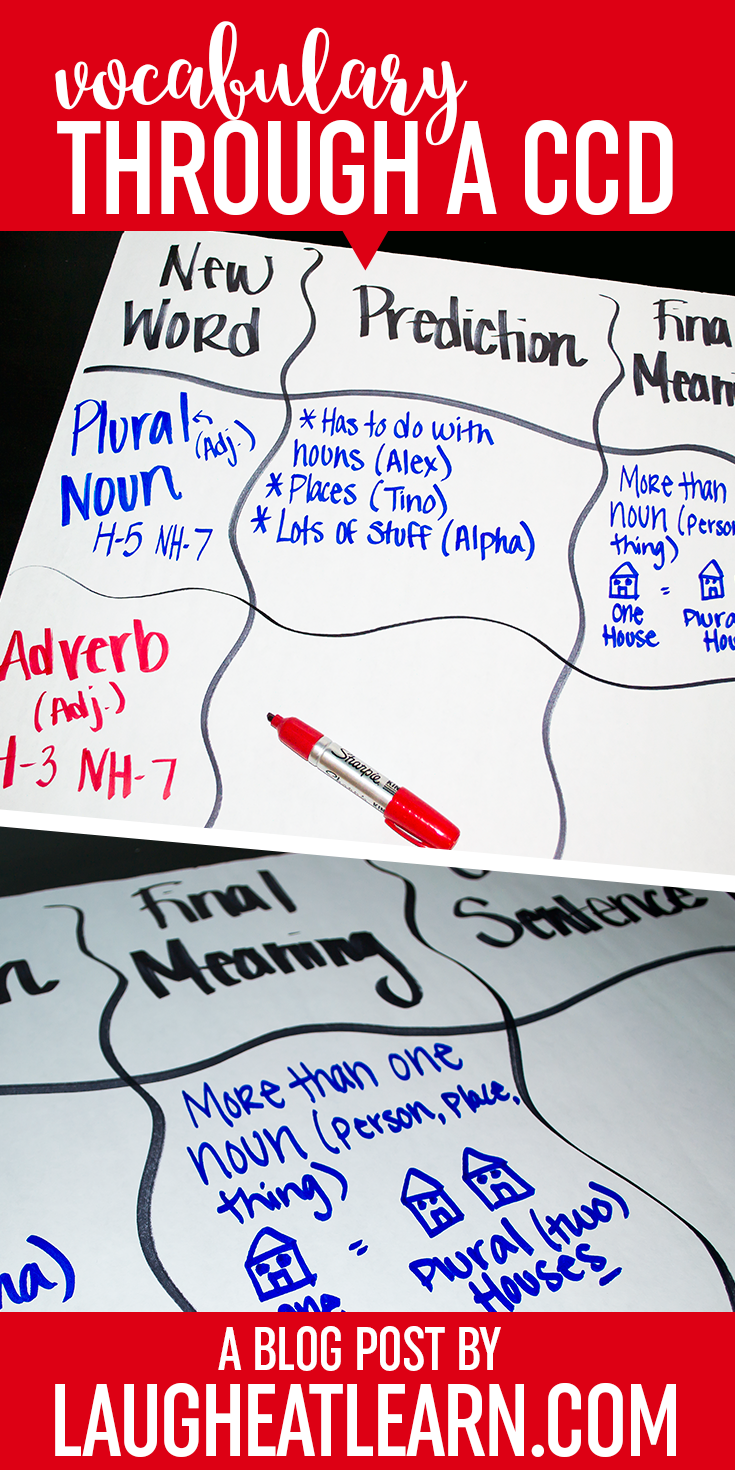 Let’s learn some vocab! Pin it to Save!
Let’s learn some vocab! Pin it to Save!
If you been GLAD trained, never heard of it, or just can’t find the time to get trained in it, you can at least use this strategy to build vocabulary IN ANY SUBJECT with each and every one of your students. For those are intimidated, allow me to take you through the step by step process of a CCD.

Examples taken from various sites including Google, Pinterest and Photobucket. Thank you for sharing your work of all these great CCD’s from your classroom!
Before: Prep for CCD
Prior to step one, you want to create a space in your classroom that your CCD can be viewed by all the students at any time of the day. It should be somewhere they feel comfortable to go and look at past words and somewhere you can comfortably stand during the entire process of introducing a new word. You will need a huge chart segmented into 4 sections, each labeled: New Work, Prediction, Final Meaning, Oral Sentence. These labels need to be in black marker. You will need multiple markers available in various colors for the rest of your words. You don’t want to use the same color in a row. This process is called color-chunking and it helps students to focus on chunks of information visually. Lastly, prepare a list of vocabulary words you would like students to know about a unit you are working on. My students are currently learning the parts of speech, so I would use these words (or related vocabulary) to teach them these words. Keep in mind the process takes about two days for you to get through a whole new word.
Photo found through Google search for CCD Charts. Thank you for sharing your work!
1. Introduce the word
Alright, day one! You can either try this whole group, with a partner they sit close enough to to discuss with or you can build teams of students to work and put their heads together. This step is completely up to you and is determined how you students can handle and process information.
- Introduce the word: write the word in a colored marker on the chart.
- Say the word: have students repeat saying the word in multiple ways. For example, say it to the ceiling, say it to the floor, say it to your partner, whisper the word. You can example to them that saying the word multiple times (60-80 times, says scientists) helps the word stick in your brain.
- Heard/not heard: ask the students who have heard this word to raise their hand, label this under the word. Then ask students who has not heard this word (hopefully they will be honest at first, but you can remind them to be!), jot that down.
- Parts of speech: label and explain the parts of speech (My example is a little tricky because I’m teaching them parts of speech).
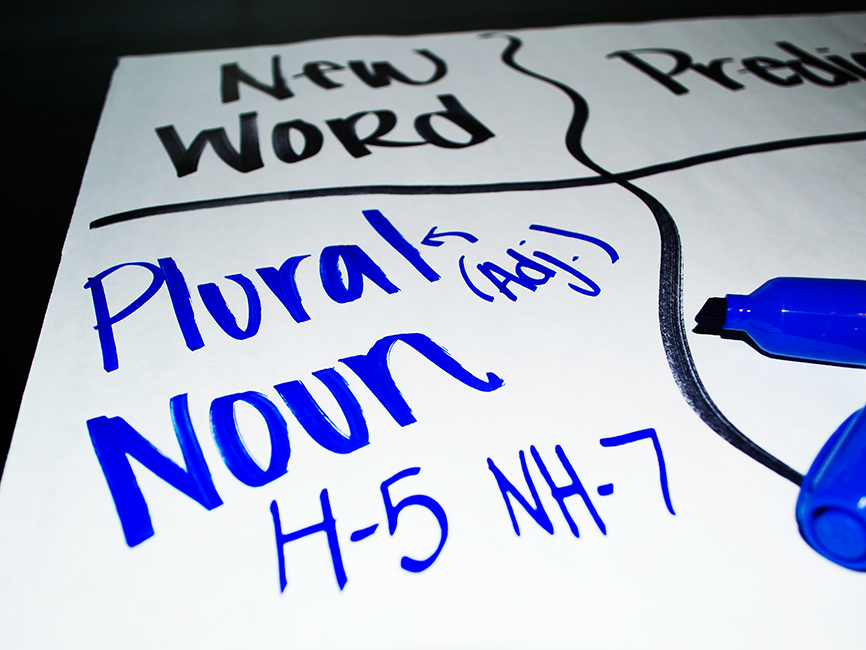
2. Students Predict
Continuing on day one, you will next work on predictions with your students. They will stay with the partner or team they were originally with. Remind them what a prediction is before beginning. Most important thing, we are not looking for perfect examples of what the word is. We want students to learn these words (they should be words they haven’t heard of), so having predictions that are way off base is encouraged.
- Make predictions: students will turn and talk and/or put their heads together within their group to come up with a prediction of the word. If you are GLAD trained, and doing a full GLAD unit, you would have a ton of chants (poems about the subject your teaching) around the room for students to hopefully look for the words in while they are discussing with partners. If you don’t have these resources, that’s okay too!
- Transcribe predictions: choose a few students, or groups, and transcribe their prediction word for word on the chart, write their name near it.
- Re-read the predictions: as a group.

3. Synonym & Total Physical Response
The last thing you will do on day one is link a synonym to the word with a Total Physical Response (TPR). A TPR is a movement you will do around the word that will help them remember it. For example, if you are doing a unit on angles, you might say “Obtuse… Very Large” and hold your arms out in a wide angle.
- Introduce a synonym: you should have come up with a synonym prior to the lesson beginning that works with the word, but doesn’t give away the “final meaning” completely to students (you want them to figure out the final meaning during the day). Say the synonym.
- Introduce a TPR: Say the synonym and do the TPR at the same time, making a connection between the two. For plural nouns, I might say “Plural Nouns…. Multiples” and make a fist with my hands and move them around to show more than one.
- Practice together: you, the teacher, will say the new word you introduced. Students will repeat the word, say the synonym and do the action. Anytime you say the word, they should automatically go through the process.
- Continue practice during the day: this new word has officially become your word of the day. During transitions, when you need their attention, or you just want to have a refresher, you will do the practice together, going through the whole process of saying the word, synonym and doing the movement.
This ends day one
You will practice the word throughout the day. You will do your lesson from the unit you planned on doing, and the word may pop up within your lesson, giving the students a chance to understand it even more. You want to do this part prior to teaching your lesson from the unit. I also started my day with CCD.
4. Final Meaning
Day two begins back in groups or partners, near the CCD chart. The teacher will review the new word, parts of speech and predictions made before beginning the Final Meaning column. Students should have been able to learn the new word through your studies/activity, or at least have a closer understanding of the word.
- Students talk: before giving the final meaning, you have them turn and talk about what they think the final meaning is. No need to jot down any of their responses, just listen in on the conversations.
- Final meaning: in kid friendly language, explain and write what the final meaning is. You want to draw and explain your drawing of the word while you are doing it, labeling if necessary.

5. Oral Sentences
Oral sentences are used for students to remember and use the word properly in a sentence. They help wrap up the use of this word.
- Teacher example: you will first give an example of the correct way to use the word in a sentence. For plural noun, I might say, “A plural noun means more than one pencils in a drawer.”
- Student practice together: students will turn and talk with their groups/partners, and come up together with a sentence that uses the word correctly. Give them enough time to do this, walking around and checking in with students who might be struggling.
- Students share sentences orally: You will choose a handful of students to share their sentences orally. They can earn points for getting their sentences too, but that’s up to your classroom management style.
- Check it off: Once students partners/groups have shared their oral sentences, you check it off to signify that we successfully completed a word in our CCD.

6. Begin Next Word
Now that you completed one whole word (remember it took you two days to get through it), you’re going to begin your next vocabulary word by beginning the process over steps 1-3. Each day you will begin by finishing the word the day before, and starting the process for your new word.
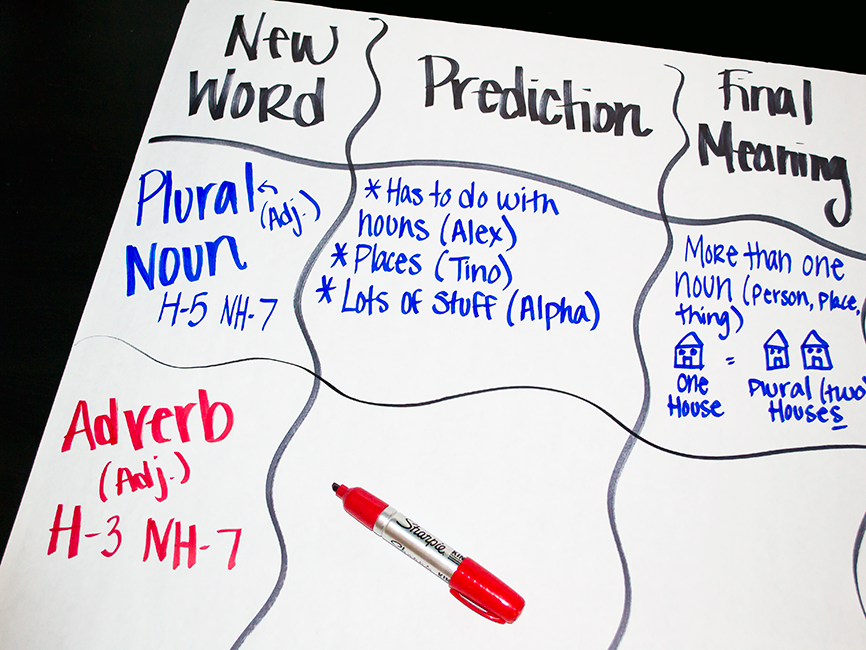
As you first begin, it’s going to take some time to get through the entire lesson. But once your students and you understand the whole system a little better, the time will fly by. I would set aside maybe 30-35 minutes when you first begin, but then you will be able to drop it down to 15-20 minutes each day.
Now that you’ve got through the chart a few times. Students can have their own personal CCD to add words they find throughout their day to their own chart. Their process is going to be a little different. Students will determine how to chunk the learning of the new word, and they determine the TPR. You can decide if you want students to work as groups, partners or individually. The personal CCD can easily be used in guided reading groups while they are doing their instruction reading with you. There are multiple ways to use the personal CCD with students to continue their vocabulary growth.
There are multiple ways to use the personal CCD with students to continue their vocabulary growth. I’ve provided two versions of the personal CCD. One with guided questions for each title. This is perfect for any student who still needs a little guided support during their vocabulary practice. Additionally, I’ve added one version that doesn’t have the guiding questions on there. Students can build up to using the one without the questions. Both are provided for FREE by clicking below!
 So, how do you introduce new vocabulary in your classroom? Do students have control of the vocabulary learning? I would love to know more about your classroom! If you found this useful and want to share with your other teacher friends, pin the image above!
So, how do you introduce new vocabulary in your classroom? Do students have control of the vocabulary learning? I would love to know more about your classroom! If you found this useful and want to share with your other teacher friends, pin the image above!

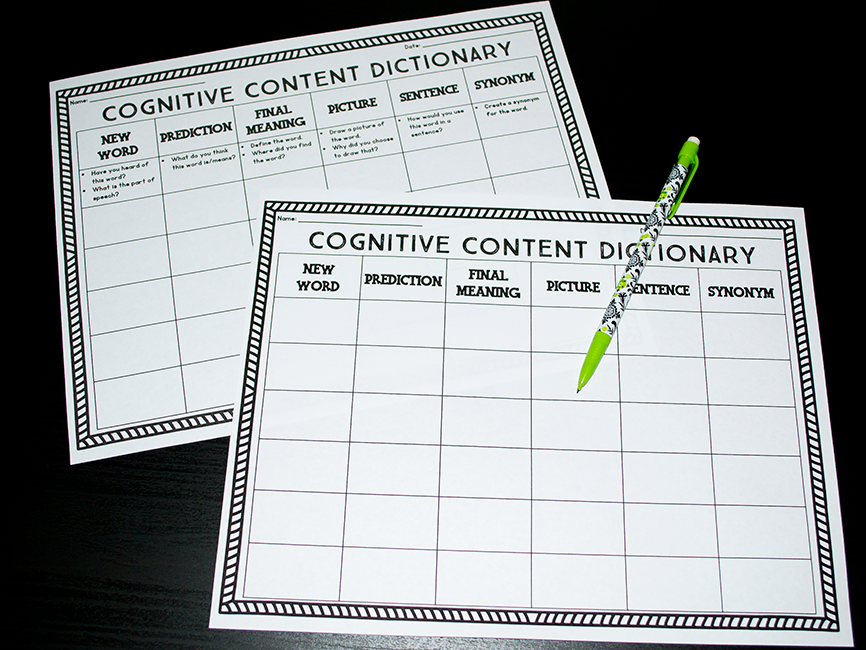
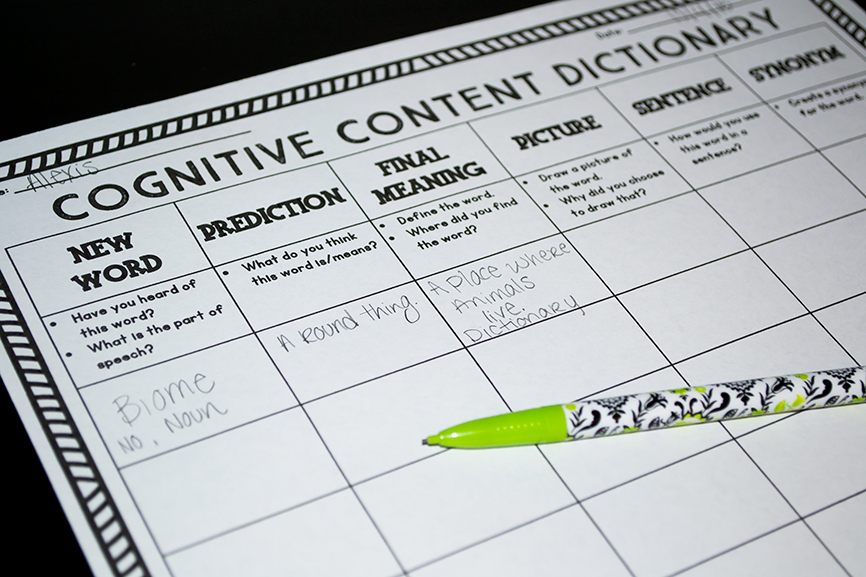
Thank you! Vocabiulary is such a need with my kiddos. This is a great approach to try with them. I'm excited to try this!
Thanks, Tina! I hope it works well for you. :]
What a powerful post!
Wow! Thank you! I had fun making this one! :]